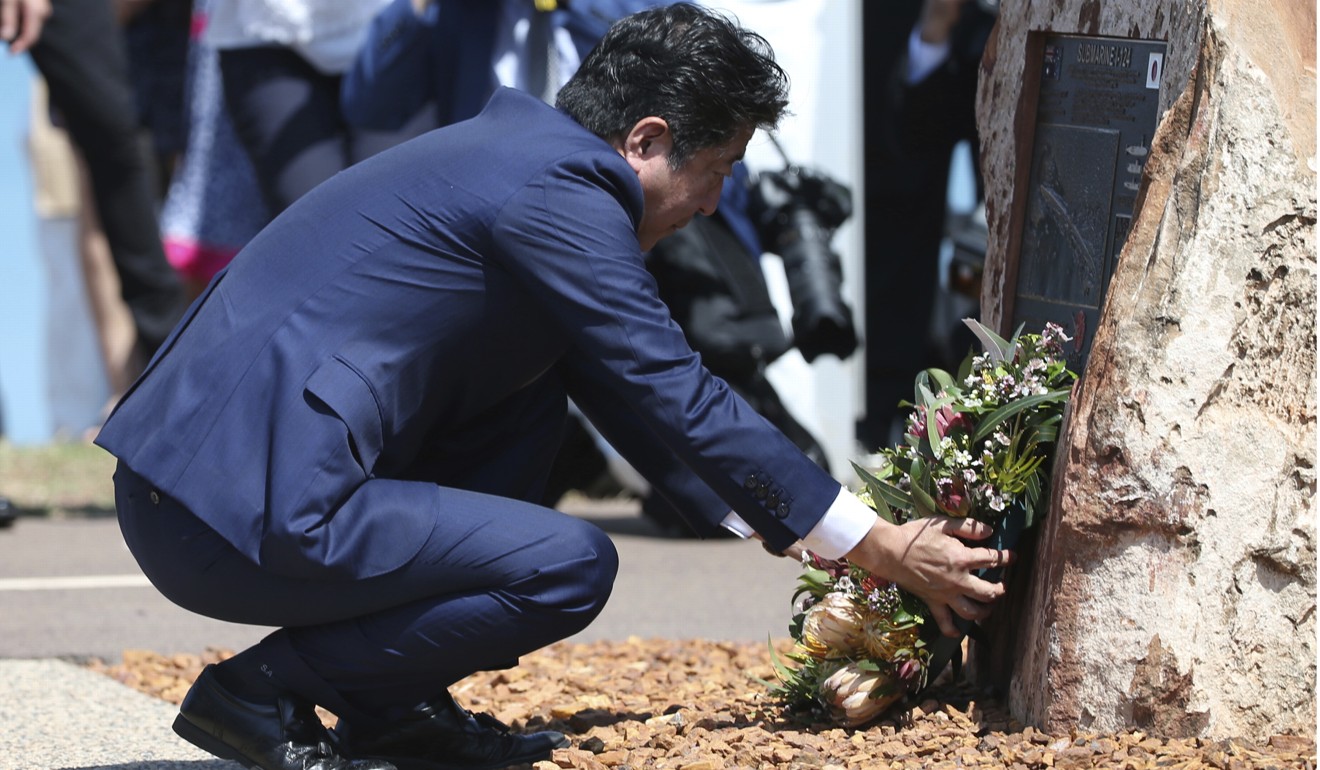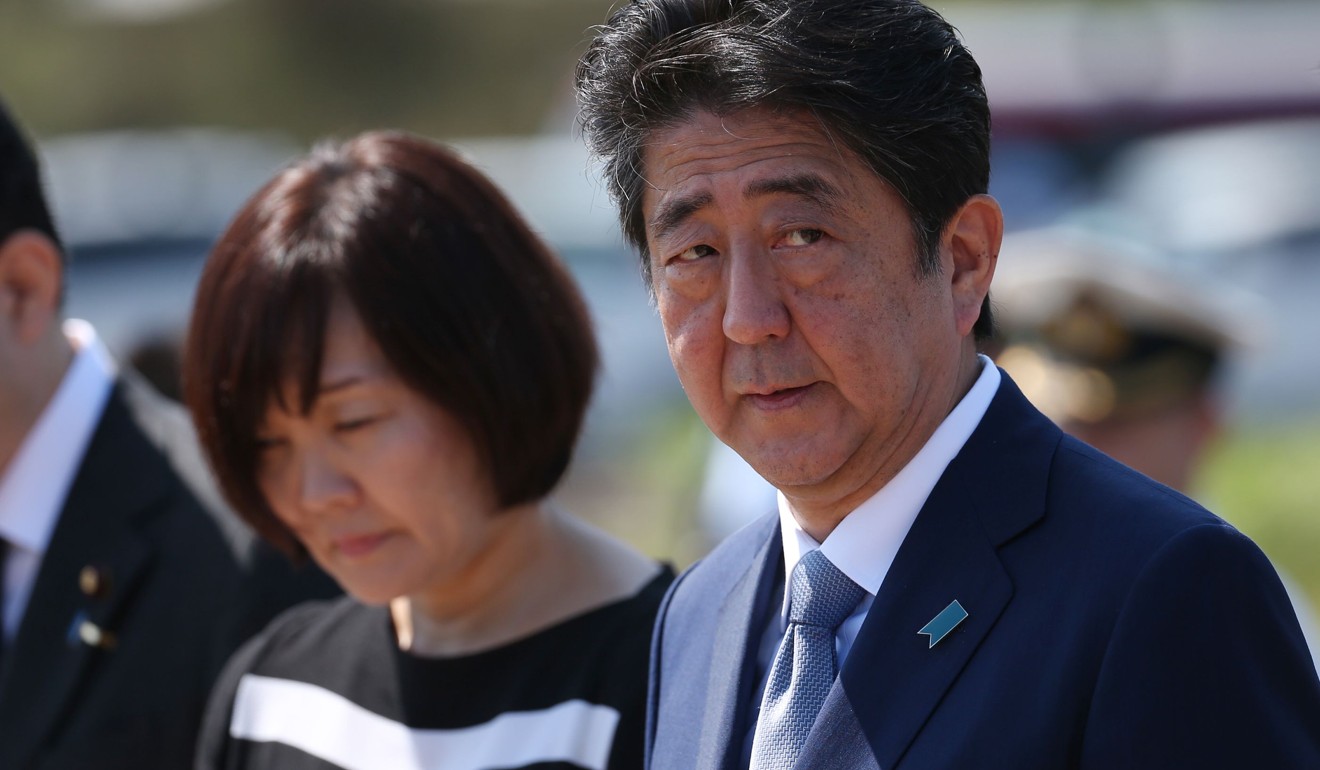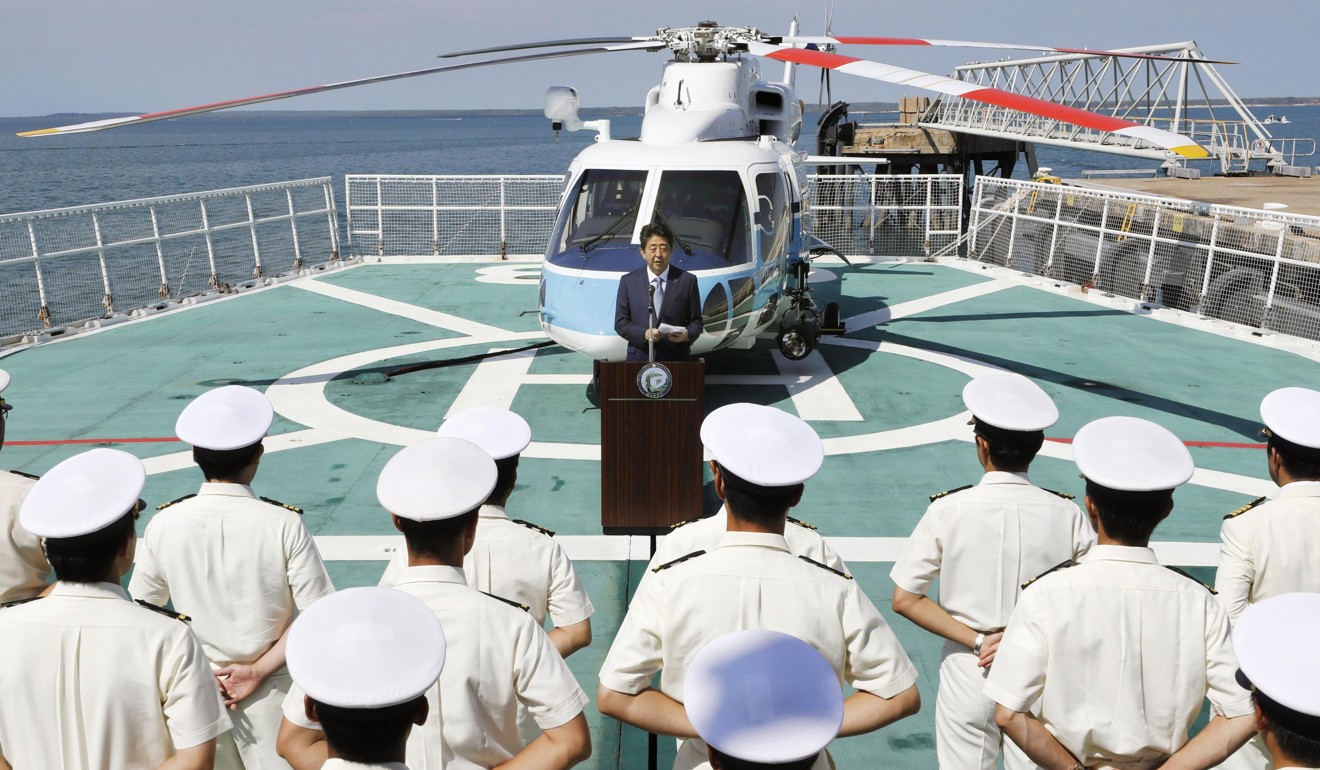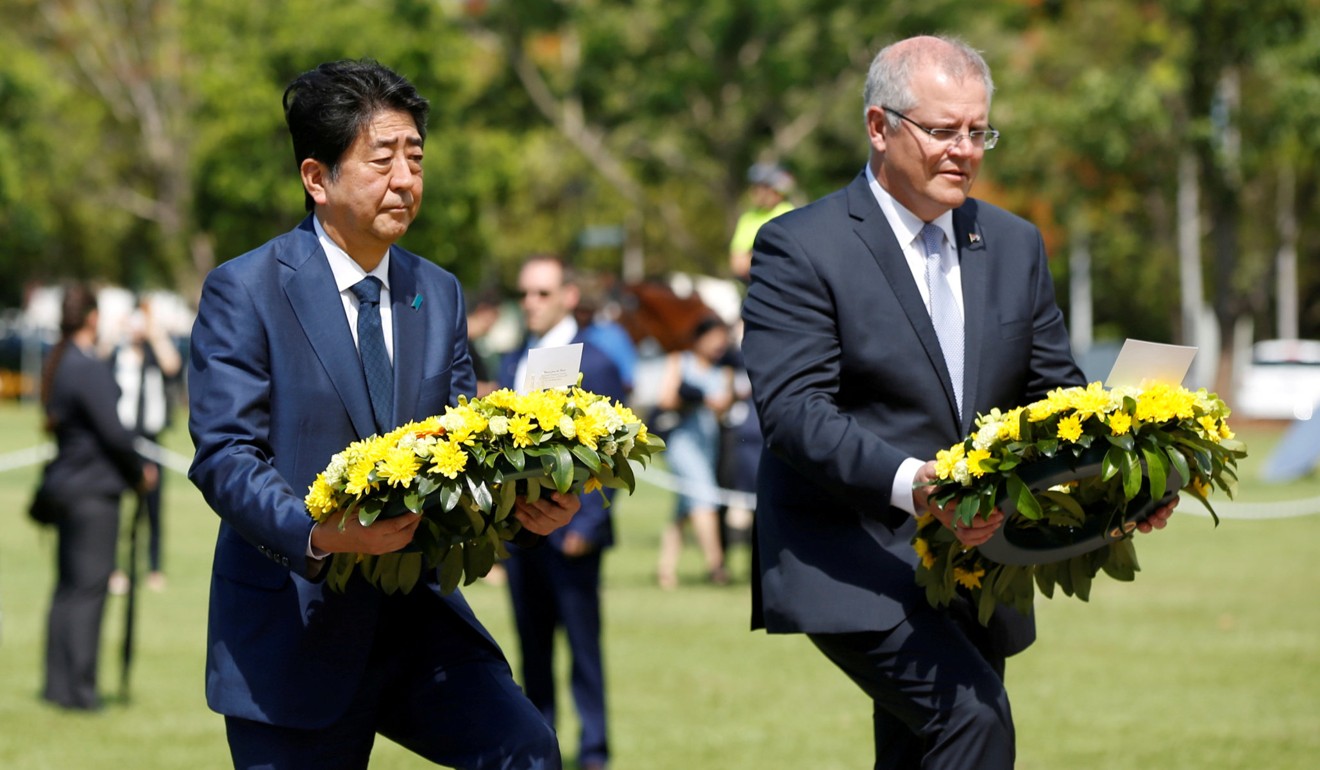
Abe visits shrine in Australia for second world war Japanese submarine crew
- Imperial sub was sunk off the coast of Darwin in 1942 while laying mines for allied shipping
Japanese Prime Minister Shinzo Abe on Saturday visited a shrine in Darwin commemorating the deaths of 80 Japanese submariners in waters near the city in the second world war.
Abe arrived in Darwin on Friday for meetings with Australian counterpart Scott Morrison, becoming the first leader of Japan to visit the northern port city since it was bombed by Japanese forces in 1942.
After laying a wreath with Morrison to remember the 240 people estimated to have died in the Darwin bombings, Abe on Saturday honoured servicemen from his own country killed in a lesser-known incident.

Japanese submarine I-124 was sunk with depth charges deployed from an Australian ship, the Deloraine, after a battle on January 20, 1942. The sub had been one of four from Japan laying mines in the area to attack allied shipping along the northern coast of Australia.
The I-124 sank with all 80 crew members on board, and remains on the seabed some 90km (60 miles) northwest of Darwin. The city was bombed by Japanese forces a month later.
During a solemn ceremony at the coastal memorial, Abe, accompanied by wife Akie, laid a wreath, as did Michael Gunner, the chief minister of the Northern Territory, of which Darwin is the capital.

The visit continued Abe’s apparent moves to show remorse for Japan’s role in the war, following his trip to Pearl Harbour in 2016.
The symbolism was underscored when Akie Abe shed tears as she visited a church and memorial paying tribute to local victims of the war and to joint Japanese-Australian efforts to clear Darwin harbour of shipwrecks.
Pastor Lauren Merritt of the Darwin Memorial Uniting Church told local media Akie Abe became emotional at how far the two nations had come since the war.
“When she was coming out of the church she was crying a little bit again, she was just so grateful for the story and overwhelmed by the friendship,” Merritt told the NT News.

Earlier in the day, Abe toured a Japanese coastguard that docked in Darwin to coincide with his visit.
“These seas, including the waters surrounding Australia, are extremely important to us as they contain the very lifelines of maritime transport,” he said in a speech on board the Japan Coast Guard ship Echigo, a 3,300-ton vessel dispatched to the Philippines and Australia in late October.
Abe and Morrison on Friday announced an agreement to strengthen bilateral cooperation on maritime security.
“Our common vision is of a free and open Indo-Pacific. We agreed to deepen our security and defence cooperation,” Abe said following his meeting with Morrison.
Morrison and Abe also agreed to increase defence cooperation, with Abe saying he hoped a deal might be agreed early next year.

A joint statement released after the talks said the two leaders also “remained seriously concerned about the situation in the South China Sea,” apparently with China’s militarisation of the disputed area in mind.
“Australia and Japan also stand united on the importance of resolving disputes in the South China Sea, peacefully and in accordance with international law,” Morrison said at the press conference.
Abe on Saturday left Darwin to attend the Asia-Pacific Economic Cooperation summit in Port Moresby in Papua New Guinea.
Abe stopped in Darwin between Association of Southeast Asian Nations-related meetings in Singapore and the two-day summit of the Asia-Pacific Economic Cooperation forum in Papua New Guinea.
Associated Press, Agence France-Presse, Kyodo
